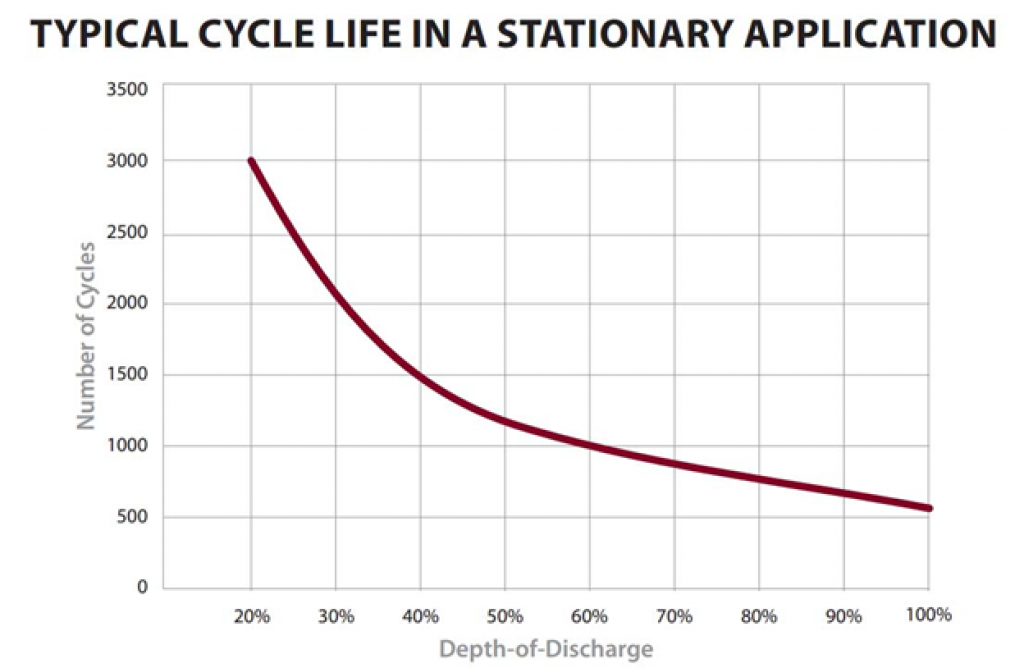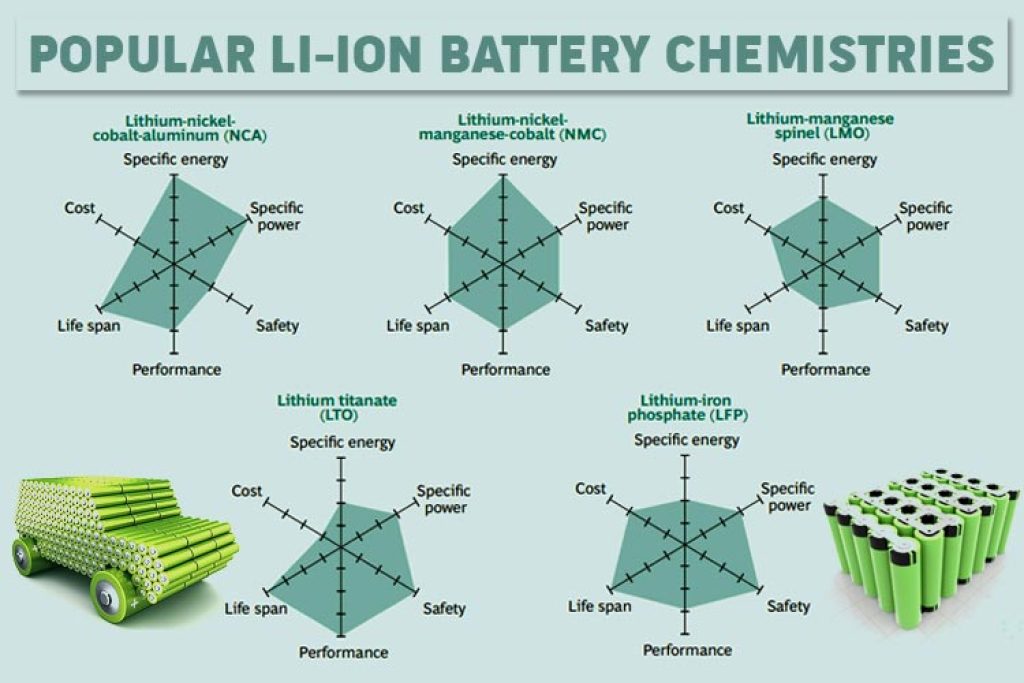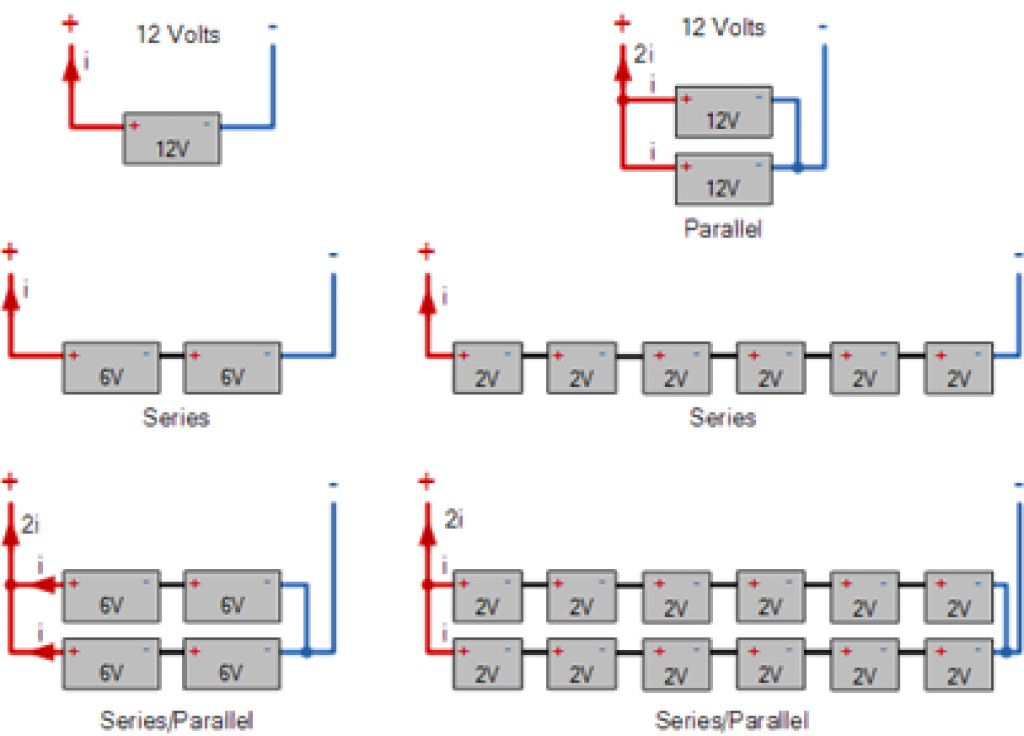Renewable energy sources, such as wind and solar, are fantastic, but they become redundant without the means to store this energy. It, therefore, stands to reason why an increasing number of people are wondering how to size a battery bank.
The deployment of renewable energy sources has sparked a deep interest in developing technologies that can store more energy for longer periods of time.
If you’re reading this article, you may already know about this, but do you know how to size a battery bank?
If you’re thinking of a DIY project or don’t want to hire an expert to do the sizing for your application, you’ve come to the right place.
To size a battery bank, you need to carry out the following steps:
- Estimate your energy demand.
- Determine the amount of autonomy (in days) you need.
- Calculate the battery capacity you require.
- Choose your battery.
- Arrange your battery setup.
This is all easier said than done. So we break it down step-by-step to assist you in sizing your battery bank.
Table of Contents
Sizing a battery bank: What should I know?
Before going any further, we must define a couple of battery-related factors you’ll need to understand.
Battery capacity
One of the most critical elements of a battery is its capacity. A battery’s capacity refers to the amount of energy it can store for later usage. Generally speaking, these amounts are represented in amp-hours (Ah), and watt-hours (Wh)
Conversion between these two units is straightforward.
To get Wh, multiply the Ah value by your battery’s nominal voltage. Conversely, to get Ah, divide the Wh value by the nominal voltage.
Depth of discharge (DOD)
DOD refers to the percentage of a battery you can discharge without damaging its internal structure. This is very important to keep your battery in good health.
A large DOD allows you to extract more energy from a single charge. It also means that your battery will not last as long.
Each battery technology has a maximum DOD which you should not exceed.
Number of cycles
This value estimates the number of charge and discharge cycles a battery can withstand before losing capacity below nominal values. It’s directly related to DOD. The higher the DOD, the fewer cycles a battery will last.
Additionally, a battery’s cycle limit helps you determine when it’s time to replace your battery with a new one.

DOD vs. the number of cycles.
Source: RVWiki
Battery type
As of 2025, there are two primary types of deep cycle batteries — lead-acid and lithium-based batteries.
Lead-acid batteries
Lead-acid battery technologies include:
- Flooded.
- Absorbed glass mat (AGM).
- Gel cell (Gel).

Source: Home Power Magazine
Lithium batteries
Moving on to lithium batteries – a much more cutting-edge technology. They have higher efficiencies, higher DOD, more energy density, and are suitable for very high-energy demands. The downside of these batteries is their price.
There are several lithium battery variants on the market. These include:
- Lithium cobalt oxide (LCO).
- Lithium manganese oxide (LMO).
- Lithium iron phosphate (LFP).
- Lithium nickel manganese cobalt oxide (NMC).
- Lithium nickel cobalt aluminum oxide (NCA).
- Lithium titanate (LTO).

For the sake of this article, we won’t dive into these battery technologies any further. However, if you’d like to learn more, check out our article discussing lead-acid vs. lithium-ion batteries.
How to size a battery bank
Step 1. Estimate your energy demand
One of the most important steps is energy demand estimation. What do you want to back up? Is it some critical load, your entire house, or an RV or off-grid cabin?
Defining what you want to back up is essential to size your battery bank accurately. This way, you’ll be able to meet your energy demands while not exceeding your budget.
So how do you estimate your demand? Well, there are several options depending on the application.
If you’re looking at powering your entire home as part of an off-grid setup, then the best option is to check your utility bill. Having an annual consumption estimate from your meter is the best way to analyze your consumption patterns across the seasons.
Depending on your area, you may consume more power during winter or summer. Therefore, it’s important to establish a complete demand scenario across an entire year. This will accurately represent your consumption.

Source: ParkPower
But, what happens if you don’t have access to that data or if you actually want to back up the loads for a mobile RV?
In that case, you’d need to take the long route. Each electrical load, whether a laptop, a TV, or a microwave, has a nominal amount of watts they consume to function. That represents the power demand of the device.
If you add the number of hours you’re consuming said device, you get the amount of energy consumed within that time frame. If you add this step to every device, you’ll get your system’s whole energy demand.
In the table below, you will find examples of devices typically in an RV as well as their average usage, in hours. This will result in Wh units.
Table for demand estimation
| Appliance | Estimated Power Consumption (W) | Estimated Hours of Daily Use (h) | Energy Consumption (Wh) |
|---|---|---|---|
| Small LCD TV | 25 | 4 | 100 |
| Fans | 25 | 4 | 100 |
| 14-15” laptop | 60 | 6 | 360 |
| LED Lighting | 30 | 4 | 120 |
| Microwave | 800 | 0.2 | 160 |
| Water Pump | 100 | 0.5 | 50 |
| Smart Phone | 5 | 4 | 20 |
| RV Fridge | - | 24 | 1,840 |
| Total | 2,750 |
Note to our readers: Manufacturers generally list the refrigerator’s energy demand. Do you want to know what the energy consumption is of some typical household appliances? Click here
Step 2. Determine the amount of autonomy (in days) you need.
Days of autonomy signifies the number of days a battery bank can sustain a load with a single charge.
You must balance this with the energy source you’ll use to charge your battery bank.
If you install an off-grid solar power system, increasing your days of autonomy will also increase the size of your PV system, which will impact the cost.
Moreover, if you use your battery bank for an RV or boat, you’ll have a rough estimate of how many days you’ll be able to power your load.
For this exercise, let’s assume you want two and a half days of autonomy.
Step 3. Calculate the battery capacity you require
Now comes the most important step — you must accurately calculate the capacity you’ll need to power your load for the required number of autonomous days.
To do this, use the following equation:

You must define the DOD and the DC Voltage in the above expression. Remember, DOD is the depth of discharge. Typical battery banks with good performance have a 50% DOD.
Voltage-wise, DC battery voltage is typically 12V, 24V, or 48V. This choice will align with the charge controller that you choose to work with.
A higher battery bank voltage will require a lower energy storage capacity, while a low voltage will demand a higher energy storage capacity.
For this example, let’s assume that there is a 48V nominal voltage and a 50% DOD. Using the above equation, the result would be:

Step 4. Choose your battery
The next step is to select the battery. Keep in mind the following criteria when doing so:
- Battery technology.
- Weight.
- Dimensions.
- Nominal voltage.
- Nominal capacity.
- Brand.
- Price.
- The number of cycles.
We will use a 12V nominal voltage and a 100Ah battery capacity for this scenario.
Not to our readers: Check out our list of the 7 best storage batteries for solar panels in 2025. You can also take a look at our posts discussing the best lithium RV batteries and the 10 best lithium boat batteries!
Step 5. Arrange your battery setup
Now, arrange the layout of your battery bank using the required capacity and chosen battery specs.
Make sure to connect your batteries one of two ways:
- Series: Series connections mean joining the positive lead of one battery with the negative lead of another. Making series connections maintains the electrical current and increases the voltage.
- Parallel: Parallel connections involve joining the positive lead of one battery to the positive lead of another battery. Parallel connections maintain voltage and increase electrical current. The following diagram illustrates how these connections are made.

Source: Alternative Energy Tutorials
Use the following expressionTo determine the required amount of parallel connections:

Now, you must take the next whole value from the result above since it must be a whole number. The number of parallel connections would be three.
Next, calculate the number of connections in series using the expression below.

In other words, you must connect four of the selected batteries in series and add three strings of batteries of the same size for a total number of 12 batteries.
Final thoughts
Now that you’ve learned how to size a battery bank, you can apply the above steps to any off-grid application of your choosing. The steps to sizing a battery bank will pretty much always remain the same, regardless of the battery technology involved.
Make sure to do some in-depth research into the different battery technologies as well as their inherent advantages and disadvantages. This will have an important impact on your final decision.
Finally, always remember to differentiate between what you need to back up versus what you want to back up – this will end up saving you hundreds of dollars in the long run.

